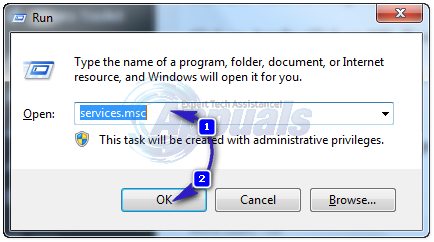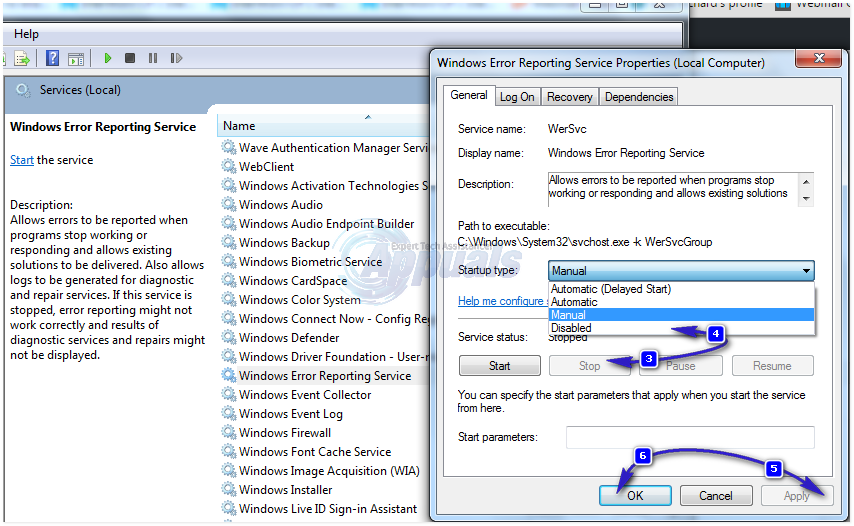What Windows problems are often associated with Werfault.exe?
First things first – it should be noted that Werfault.exe is, indeed, a legitimate part of the Windows Operating System and is not at all a third-party element with malicious intent or something of the sort. However, there are a few problems that are unfortunately associated with Werfault.exe, the chief one being the Werfault.exe process malfunctioning or being taken over by a third-party element, leading to it using up every single bit of the affected user’s CPU and not letting go of any of it. When a user affected by this problem accesses their Task Manager and heads over to the Processes tab, they see that the Werfault.exe process is using up ALL of their computer’s available CPU and refusing to release any of it. This can go on to be quite a tremendous issue as all of a computer’s memory being used up consequently leads to it becoming sluggish beyond all extents, rendering it entirely unusable.
How to fix problems associated with Werfault.exe
In almost all cases, the Werfault.exe process starts using up all of an affected user’s CPU either because of a malfunction on the part of the process itself or because it has been taken over by another program. To expand on the latter, the Werfault.exe process can become overwhelmed when a certain program on the affected user’s computer starts spewing out errors left and right, resulting in the process commandeering all of the computer’s available CPU in an attempt to try and somehow organize and deal with the errors that just don’t stop popping up. Thankfully, regardless of what is causing the Werfault.exe process to use up all of your computer’s available CPU, there are a few different solutions that you can use to try and fix the problem, out of which two solutions – or rather two options – are evidently more effective than the rest. These two solutions are better described as two different options because, in order to fix this problem, you can either disable the Windows Error Reporting Service entirely or find the program or application that is causing the Werfault.exe process to commandeer your CPU and get rid of it. The former will result in you losing the Windows Error Reporting Service – a pretty useful tool, whereas the latter is a slightly lengthier solution than the former. The choice is yours.
Method 1: Clean Boot Your System
Clean booting is one of the best ways to get rid of unwanted errors and to improve over all performance. Since, it disables non-windows start up programs and services. Try these steps to clean boot your computer (here). Once done, reboot your system and test to see if issue comes back, if it does then proceed with Method 2.
Method 2: Run System File Checker Scan
see steps here
Method 3: Disable the Windows Error Reporting Service
Hold the Windows Key and Press R. In the run dialog, type services.msc
Scroll down the list of services on your computer and locate and double-click on the Windows Error Reporting Service. Click on Stop. Open the dropdown menu in front of Startup type and highlight and click on Disabled. Click on Apply. Click on OK. Restart your computer.
This method will disable the Notices from WER but it is not recommended, because you will not be informed of any errors; therefore i suggest you to proceed with Method 3 to pin down the cause of these errors. Otherwise, if you are comfortable with leaving it disabled, then there is no need to proceed to Method 2.
Method 4: Find the program responsible for Werfault.exe malfunctioning and get rid of it
Open the Start Menu. Search for eventvwr.msc and open the program that shows up. Under Summary of administrative events, expand the Errors section by double-clicking on it. Find the source responsible for most (if not all) of the errors registered in the Event Viewer in the last hour or when the error appeared and double-click on it. Click on the top five-six errors on the list that appears in the new window and check out the values for their Faulting application name fields in the bottom part of the window. The application that appears on the Faulting application name fields of most (if not all) of the errors you click on is the culprit. Find the program or application that the culprit is tied to. You can either scour the internet or manually sift through your computer to find the program or application that the culprit is tied to. Uninstall and remove all traces of the program or application that you found the culprit to be connected to.
Printed Documents History feature on Windows 10: All that you need to know4G vs 5G: All you need to know!How to Fix WerFault.exe Application Error on Windows?Everything You Need To Know About The Six Invitational 2019

